Computation and Construction in Architecture (CoCoA) Lab
School of Architecture, Design and Planning
School of Architecture, Design and Planning

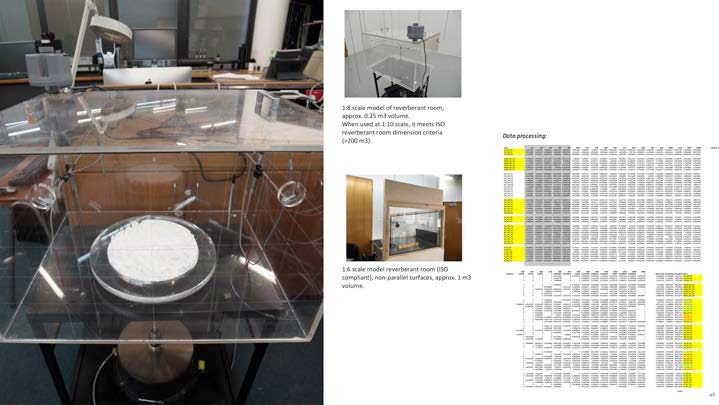
Scale model reverberant room (right, mid) and scattering data (left) from scale model prototypes
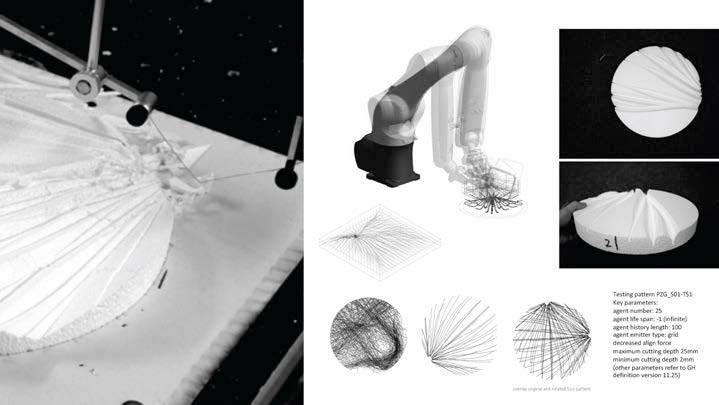
Scattering surface pattern and robotic tooling with changes in periodicity (Xuhui Lin, 2016)
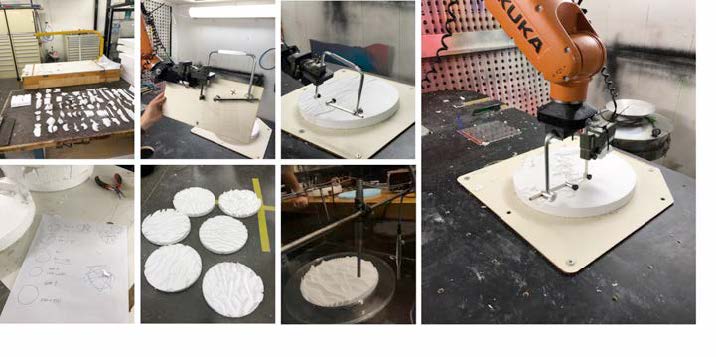
Analogue subtractions, robotic hot-wire cut, pattern series, acoustic testing in reverberant box, KUKA KR 6 workcell
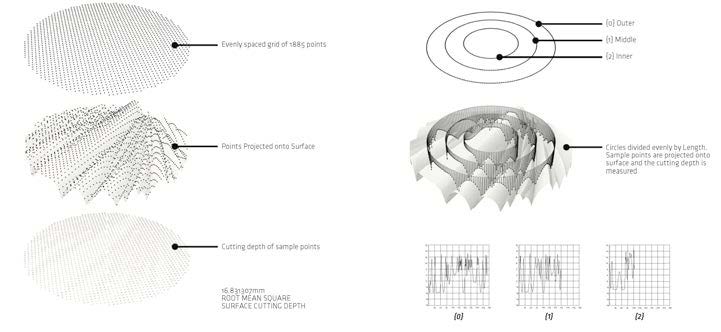
Root Mean Squared RMS comparison with point blanket (left), and Depth-Depth Mean with radii set at intervals (right)
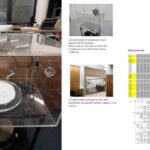
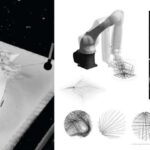
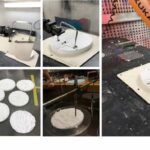

Relationships between sound and architectural space are complex because sound wavelengths span a very large range (1:1000) and are significantly large on an architectural and human scale. As a result, not only is sound propagation in rooms immensely complex, but also human perception of sound is remarkably rich and varied. The macro-geometry or overall form of a space, such as flat or curved or intersected walls, and the micro-geometry of surface patterns influence the way in which sound is projected back into space and is heard.
Specifically, micro-patterns can contribute significantly to sound absorption, reflection, or scattering into different directions. The integrative systemic bridge between parametric design and acoustic analysis could offer control over acoustic phenomena produced by complex spatial geometries, aiming at a sound produced by the spatial geometry itself, as opposed to amplified sound in common public spaces, work spaces, or spaces for performative arts.
Through empirical tests of complex pattern geometries, mathematical models linking form and material to acoustic response can be derived, which allows the production of a space with a distinct ‘sound coloration’, based on a framework for a spatial syntax that integrates acoustic performance. From a signal processing perspective, space can be thought of as an acoustic filter; that is, the effective use of architectural design can concentrate and rarefy sound in time and frequency domains. To enable design for this, a mathematical connection between acoustics and architecture is required.
The research demonstrates that relationships between parametric design and acoustic simulation can act as a design driver: acoustic performances in ellipsoidal spheres can be acceptable if the geometry is integrated with acoustic simulation, thus indicating that speech intelligibility can be addressed through parametric processes in architectural design.
Consequently, this project describes research into randomized patterns in order to identify tendencies for the acoustic performance of non-periodic surfaces. It describes an interdisciplinary collaboration between computational and generative design, acoustic analysis and simulation, and advanced robotic manufacturing, aimed at novel paradigms for surface geometries that change the acoustic response of space.
The research investigates both macro and micro strategies for the acoustic performance within complex (double curved) geometries. Through interdisciplinary collaboration, and by interfacing parametric design, structural engineering and acoustic analysis, the research revises directly complex curved geometries through iterations and innovative use of parametric and analytical design methodologies. We developed, tested and evaluated systems that provides a strategic solution for avoiding sound concentration, which consequently can be used to enhance acoustic performance through parametric modelling in complex intersecting and curved geometries of architecture.
The research demonstrates that relationships between parametric design and acoustic simulation can act as a design driver: acoustic performances in ellipsoidal spheres can be acceptable if the geometry is integrated with acoustic simulation, thus indicating that speech intelligibility can be addressed through parametric processes in architectural design. Continued into research for micro-, and macro-acoustic design applications that enhance speech intelligibility for public and work spaces, so that human interaction and communication can be supported.